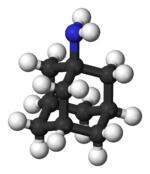Pharmacological Crimes - Borna Disease
Borna Disease
Borna Disease was first diagnosed in horses in Borna Germany in 1885. The disease is also called "heated head disease" as the descriptive name implies one of it's symptoms.
Borna Disease is caused by a virus hereafter called Borna Disease Virus or BDV. BDV has been found in horses, cattle, sheep, dogs, and cats. It is a zoonotic meaning that it can pass freely from animal to human and back again.
BDV has been associated with learning impairment and altered social behavior in laboratory rodents. These impairments have been witnessed in horses, cats, and dogs as well.
Recently BDV has been detected in humans and implicated in the psychiatric disorders schizophrenia and bipolar disorder. It is not known if BDV is responsible for all cases of these two psychiatric disorders, but then again BDV has only recently been found in humans.
This does not mean that the virus is new to humans, only that being able to detect is is a new development.

Amantadine
Amantadine is a drug originally developed to help fight influenza. The drug came out in 1966 and was effective at that time. However, test results indicate that all versions of influenza are now resistant to amantadine. Tamiflu is now the inhibitor of choice for influenza.
During the 2007 ~ 2008 drug season the Centers for Disease Control (CDC) found that Amantadine was no longer effective against any currently circulating forms of flu.
However, tests in Europe indicate that amantadine is effective in arresting the development of BDV in both animals and humans. Reports are that the drug can not only halt the replicating abilities of the BDV virus, but that patients suffering from schizophrenia and bipolar disorder caused by BDV often stop having episodes of hypomania after a four week course on the drug.
How it Works on Viruses
Amantadine is thought to interfere with the viruses ability to drop it's coating once inside a cell. If the virus cannot shed this shell it cannot infect the host cell and, in turn, replicate.
Other Uses
Amantadine has also been found to help relieve fatigue symptoms of
patients with multiple sclerosis, as well as peripheral reports that
the drug helps with ADHD. Amantadine has also been prescribed to help patients get over cocaine addiction. It is also prescribed to patients suffering side-effects from certain psychotropic drugs...those drugs were not listed.
It can also be used to reduce the negative sexual side effects of SSRIs.
German Pharmacology
After extensive research in FDA sources and Endo Pharmaceuticals I've not found one reference to Amantadine (Symmetrel) being used in this country as a bornavirus anti-viral.
In Germany Amantadine has been found effective in reducing the effects of and eradicating the prescience of bornavirus. Nineteen of the thirty patients tested with an eight to twelve week course of treatment cleared the virus. That's a whopping sixty-six percent.
Non-Use in the U.S.
Surely someone, Sandoz or Endo Pharacuticals, has discovered that Amantadine is an effective treatment against Borna Disease Virus. Is it possible that since the drug is now thirty years old and no longer patentable that the lack of profit is the primary focus?
Is it possible that drug companies are making so much money on anti-depressants and other mood altering drugs that attempting to cure the underlying cause would affect their stock prices?
In other words is profit on current medications the deciding factor on whether or not to market an effective cure for schizophrenia and bipolar disorder?
This is possibly a clear case of "free-market economy" not being in the best interests of the public. This in turn clearly shows a need for government involvement in certain aspects of human health and happiness.
I can only imagine the number of people joyfully returning to normal lives once cured of schizophrenia or bipolar disorder. But the possibility of that happening in this country is severely hampered by the race to profit and the current price of stock.








